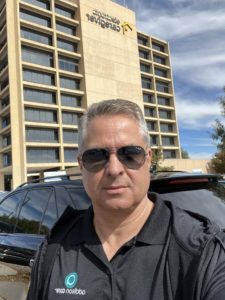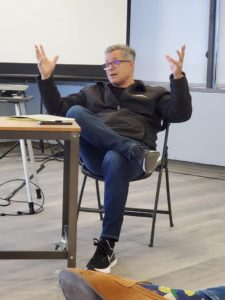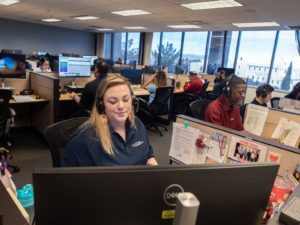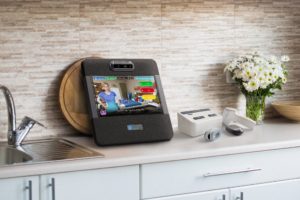[av_heading heading=’Are You Starting Up a Start-up?’ tag=’h1′ style=’blockquote modern-quote modern-centered’ subheading_active=” show_icon=” icon=’ue800′ font=’entypo-fontello’ size=” av-desktop-font-size-title=” av-medium-font-size-title=” av-small-font-size-title=” av-mini-font-size-title=” subheading_size=” av-desktop-font-size=” av-medium-font-size=” av-small-font-size=” av-mini-font-size=” icon_size=” av-desktop-font-size-1=” av-medium-font-size-1=” av-small-font-size-1=” av-mini-font-size-1=” color=” custom_font=” subheading_color=” seperator_color=” icon_color=” margin=” margin_sync=’true’ av-desktop-margin=” av-desktop-margin_sync=’true’ av-medium-margin=” av-medium-margin_sync=’true’ av-small-margin=” av-small-margin_sync=’true’ av-mini-margin=” av-mini-margin_sync=’true’ headline_padding=” headline_padding_sync=’true’ av-desktop-headline_padding=” av-desktop-headline_padding_sync=’true’ av-medium-headline_padding=” av-medium-headline_padding_sync=’true’ av-small-headline_padding=” av-small-headline_padding_sync=’true’ av-mini-headline_padding=” av-mini-headline_padding_sync=’true’ padding=’10’ av-desktop-padding=” av-medium-padding=” av-small-padding=” av-mini-padding=” icon_padding=’10’ av-desktop-icon_padding=” av-medium-icon_padding=” av-small-icon_padding=” av-mini-icon_padding=” link=” link_target=” id=” custom_class=” template_class=” av_uid=’av-lehrb03y’ sc_version=’1.0′ admin_preview_bg=”][/av_heading]
[av_hr class=’short’ icon_select=’no’ icon=’ue808′ font=’entypo-fontello’ position=’center’ shadow=’no-shadow’ height=’50’ custom_border=’av-border-thin’ custom_width=’150px’ custom_margin_top=’30px’ custom_margin_bottom=’30px’ custom_border_color=” custom_icon_color=” id=” custom_class=” template_class=” av_uid=’av-lehraag2′ sc_version=’1.0′ admin_preview_bg=”]
[av_textblock textblock_styling_align=” textblock_styling=” textblock_styling_gap=” textblock_styling_mobile=” size=” av-desktop-font-size=” av-medium-font-size=” av-small-font-size=” av-mini-font-size=” font_color=” color=” id=” custom_class=” template_class=” av_uid=’av-leeh6uma’ sc_version=’1.0′ admin_preview_bg=”]
So, I started entrepreneurial young. And I was out on my own right before my 16th birthday, so putting food on the table was tough. You learn real quick, and you get a thick skin. Since then, I don’t know how many businesses I’ve owned. I was in the security industry for a long time, and in a way, I still am. Are you starting up a start-up? Hopefully, some of my experiences will shed some light on your journey. Truthfully, I didn’t know what everybody should know about starting a start-up. But maybe I knew more than some.
What I had done in the start-up realm
I had put inventions into production and manufacturing plants. My company brought those products into the United States. We sold them through Costco, Circuit City, Comp USA, Home Depot, Meyers, and Fry’s Electronics. And did a personal airing on QVC. And I’ve been in several positions where I worked for a company purchased after my hire. It was challenging to help with the transition for the seller, but I did it. And I founded businesses that I sold. Eventually, I had a company that bought another business.

A not-so-favorite season for me was going through the worst market downturn in the early 2000s. And there’s something everybody ought to know before starting up! Big retailers, including Circuit City and Comp, USA, vaporized within 12 months. I’ve also been through the takeover of a business that led to a reverse takeover, and I got it back. While I was doing that for years, I founded Electronic Caregiver. Electronic Caregiver Inc. puts healthcare technology into homes, physical therapy centers, and health practices. We supply support for the patient, the providers, and the caregivers.
I’ve got an idea!
I went to Silicon Valley and said, “I have a great idea.” They said, “What is it?” Confidently replying, I said, “I’m going to build a virtual caregiver. I’m going to take a voice, as you find in Alexa, and I’m going to give it a face and a body and the ability to work with objects. It will leverage some AI and do real-time health assessments 24 hours daily. It will be able to collect vitals and send reminders to take medications. Providers will know if patients comply with their plans. If there’s an adverse drug reaction, we would see those signs. We will coordinate with patients and providers for earlier intervention.”
What the ‘big boys’ said
So some of the biggest companies in Silicon Valley behind every major company you’ve ever heard of and some of the biggest equity funds there said, “What would it take to build this, and how would it work?” I answered, “Well, we will do some edge computing on devices. We’re going to have some state-of-the-art visual sensing. We’re going to be able to show somebody’s rehab routine. We will measure performances and recoveries. We’ll know if they’re doing it. We’ll know if they’re improving, and we’ll know for their failing. We will see signs of functional decrease or increase, fall risks, and so much more. We’ll know what we need to make to help them reach success in their medical plans.” I went on with this whole list.
And they said, “So you’ve mentioned AI, some animation, natural language processing, and edge computing. This will all be displayed on some hardware?” They asked, “Where are you in all that?” And I answered, “Well, I’m talking to you!”
 The Pushback Began
The Pushback Began
“This is going to cost a lot of money.” They said, “Give us the sequence of how you think this is going to happen and what it will cost.” I said, “Well, we’re working with New Mexico State University. They have this amazing motion capture lab. They use visual sensors while people walk across prepped floors. With all the sensors, they can see and measure gate.” I added, “They can detect somebody developing Parkinson’s disease. The sensors can alert when someone is at higher risk of a fall. With visual sensing, you can see so many things.”
I continued, “So, with NMSU, we’re building a visual lab. We will put our lab inside their lab. We’re going to certify it, and then we’re going to deploy it coast to coast for four to five years.” “We will organize hundreds of health providers, stocks, and rehab centers. Through them, we’re going to organize thousands of patients. I see my team applying different technologies in the lab development to collect parallel data.
My team will develop the product and replace this intense lab with a plug-and-go system that would go right into a house. But I know we needed to work with Apple, Google, Intel, Amazon, Microsoft, and Orbex.” They said, “Have you talked to any of those companies yet?” I answered them, “We’ve made some phone calls. People are always interested.”
The Pitch Continued
“We will combine the research with your investment and tie it with PR. That will help build the brand”, I surmised. And they said, “How do you know you’re actually going to be able to collect data through these devices that you have yet to get into your hands?”
“That requires software teams to write the algorithms and extract the features. You’re going to need peer reviews.” Responding, I told them, “That’s exactly what we have to do.” They said, “How long do you think those things are going to be on the road? Did you say four or five years? I said, “Yes, about that. The plan is to build the lab, mobilize it, and collect the data. We will streamline this elaborate studio into a plug-and-go home configuration.”
“Then we will launch a next-generation medical alert that does telehealth. Medication alert that does telehealth physician on-demand, emergency response, and medication management. We will lock another system that goes into the pipeline for a voice-based system. That system will do in-home exams by voice and collects vitals. And all this ties into a nurse triage.” (Hey, no one said starting up a start-up would be easy, right?)

The Bigger Vision
“We will use this national network of Home Care Partners we’re creating. That network will bring the virtual caregiver to market. And if we get down the road far enough, we will be able to reduce the cost. That will make it a Medicare solution. If so, we will dominate remote patient monitoring around the world. We will own it.”
So, they said, “Give us a price tag.”
And I said, “Wait, there’s one more thing I want to do! We’re already speaking up for this enterprise solution. This platform manages all the appliances in the field and all the data we’re collecting; all personal health data needs to be protected. It needs to be dispersed between providers and EHR systems. And our database systems, and then we will have both clinical portals for our providers and their caregivers.”
I told them we would do this between 50 and $70 million; the whole thing. And I told them by the time we brought this Addison care to the market, we would already have thousands of customers and be within the Medicare system. And so here’s what they thought about this whole thing; they told me I should have naively tattooed in block letters on my forehead. They said it was never going to happen.
Pushing this start-up forward is not possible?
They told me if I did that in Silicon Valley, I would burn $80 to $100 million. Overnight. I was talking about deploying a lab coast-to-coast. And that without any certainty that I can get it monetized or get any of the hospital systems involved?
They told me that we would run through $100 million in less than two years and that my prices and my cost assumptions were ridiculous. “What you’re talking about [virtual animation] cannot even be done now.” And I said, “By the time we get there, it will.” That was twelve years ago. Nobody said that starting up a start-up would be easy. In fact, I’ve said business is hard!
Today and Tomorrow
So where are we in these ten years and everything I said we would do? We own our 10-story building. And we took over the 2-story building next door. We are over 300 full-time employees. Our 9th floor is filled with software developers.
When Amazon visited us, they said very few companies have development teams this size. They especially noted a Dev team so diverse with many different skill sets like ours. They said they didn’t even know how we could put a price tag on the labor force we managed to assemble.

We put a multimillion-dollar lab project together. Our team was with hundreds of providers and screened thousands of patients for eight years in 32 states. We’ve got the most extensive datasets, things nobody’s ever been able to collect. We launched our first product nationwide. Oh, and by the way, it was managed with that Addison architecture, that enterprise solution I told you they said we couldn’t build. We launched the second product. Reimbursable now by Medicare. And we’re expanding all over. We created great partnerships. Are you a little more encouraged in starting up a start-up?
The Start-up in the Public View
In January of 2023, at CES in Las Vegas, NV., we launched the Addison Care product to the public for sale. Electronic Caregiver Inc. is now selling those same envisioned systems and receiving feedback from the general public. So you look at where we are today solution, launched product one and reimbursed by Medicare, which enabled us to sign deals to expand across the country. We have thousands of customers that are paying us every month. Consequently, we now have this vast ocean of customers reimbursed by the healthcare system. We created the virtual caregiver, Addison. You would be amazed if you ever walked through our office and saw where it is today.
When we took Addison to CES for the first time, everyone who experienced it and interacted with it was utterly amazed. We flew new logos inside our exhibit during our second visit to CES. Those included Amazon, Intel, Dell, and AWS, along with notations of our collaborations with Google on some of our solutions.
Relationships Matter
You may be asking how you get those relationships. My answer is you build something of value. Amazon has now done two case studies on our Addison Care SaaS. Those studies are on their website.
But how did I get here? One of the motivating pieces is that I found a great mentor. We all need them. We all have different stigmas. Everybody has something going on inside that they don’t want to admit. Some say, “I’m wounded and feel ashamed.” The breakdown of families. Perhaps you are embarrassed about your parents or a lack of education. Maybe it’s not knowing if you’ve got the same ability. You might be nervous you can face it all because you’re a woman in business, and it’s tough. It might be that you used to be incarcerated.
People are giving up with all these different reasons why they can’t be successful. But one of the things that’s cool is that we can completely reinvent ourselves. We can reinvent our character and, with that our image.
Sometimes you’ve got to. It’s tough because you have to decide whether you can go after something. And if you’re going to go after it, you have to figure out how to take it to the next level. We should never be stagnant. Humans should constantly be growing. There’s always another place. Go there.

Your network in starting up your start-up
Sometimes people are in business, but they’re not doing what they want to do. That stuff they’ve always wanted to do sits in the shadows until it slips away while life keeps moving on without us. One of the primary key points is how you can grow and be a greater service to the people around you. How can I increase my network to affect my community positively? And then outward to my country and my world. I’m talking about actual intimate relationship development. We get hung up on not wanting to approach people because we don’t want to bother them the way that we often feel bothered. But there is a way to develop community relationships and reciprocate, compensate, and share in each other’s wins.
You must ask and know what you’re going to ask for. So you have to get clear on your intention and then develop a plan to take things to the next level. You can’t do everything independently, so you need a team. Sometimes your team is your internal staff, and sometimes there are other people. That is around you and your culture. They are doing things the same as you’re doing. You need people you can share with that you have a big dream you’re going after.
In the end, it’s all about you
Self-auditing is good. We plan and then realize that we’re not there yet. And that gives us insight. To get up and keep moving. Planning, communication, building your team, Planning communication, and knowing how to get your capital. And it is learning how to survive. And one of the most important things today is to be incredibly careful about your social media.
So I will end on this: We’re living in a time when we’re the freest, with access to the most data and the most significant number of potential investors, customers, and teammates ever. On this day, you can create new relationships. You can even consider how many new connections you are adding. Your address book is so significant, and I always talk about it.
You’re not out of people!
I have had people tell me that they’re out of contacts. My question to them is, aren’t you an entrepreneur? How are you out of contacts? The New York Times published an article that the average person knows 600 people. One layer out of the 600 that you know is 360,000 people. Suppose you go beyond that group and get to their 600 people, now 216 million. If you’re not, you’re never out of people. If you’re an entrepreneur and you’re in business.

And even if you’re an employee at a company, all the same rules apply. If you improve your capabilities and your skill set, and you improve the way you can motivate and encourage people, you’re always the one who’s bringing about the right culture. Do more than you get paid for. Show your intention. And then you can rise.
And you happen to be amazing
You are a bipedal upright skeletal framework. You have a supercomputer, an organic computer, and it’s in an armored housing mounted onto a swivel turret. That sits on top of this bipedal skeletal framework. It has a binocular vision in the front and uses these cones and rods. They are getting the information and sending it to your organic computer. That’s flipping the image right side up and filling in the missing information your eye doesn’t see. Two diaphragms are mounted on your head that responds to external vibrations. Those send that data to your organic computer that translates it, and you hear a voice, a dog barking, or a symphony. You’ve got an intake system and, unfortunately, an exhaust system.
You can take organic matter and ingest it. And it’s converted into sustainable energy. You have 60,000 miles of capillaries, hydraulic systems, and pneumatic pumps, all moving. All these are capable appendages. You’ve got the sound system that lets you speak. And you have these creative impulses. And all these amazing sensory inputs. You’re a conscious soul that’s in a space suit. You are ingesting and exhausting gases so that you can do something amazing and creative. And you can interact with each other. You could bring about a lot of love and a lot of services, and a lot of wisdom, in wonderful ways. And you don’t have to impact the people in your house; you can impact the 200,000 people in your county. The millions in your state. And around the world.
Remember, when starting up your start-up, we’re all the same
It’s the CEO of Starbucks and the man who rolls that coffee cart out to the sidewalk every week in Manhattan. It’s what they’re saying and the way they’re saying it plain. What they’re communicating and how they’re sharing it. The people around them are what allow them to expand their networks. They learn how to manage capital and extra resources, and they never get stagnant. And their offers are always fresh. Their recommendations are always increasingly diverse.
And then the next thing you know, they’re helping to build shelters, fighting human trafficking, and donating. They donate hundreds of billions of dollars out into the world that has nothing to do with their world. But only has to do with improving the human condition and experience.
Think big and be ambitious. Go after something extra, not the ordinary. Don’t let them tell you it can’t be. And don’t get stuck in any small-town thinking. The world is a big place where a lot of extraordinary things happen. You can be one of them.
CEO Tony Dohrmann’s Tips For Entrepreneurs – YouTube
[/av_textblock]